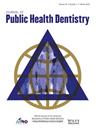Reports of interventions to improve dental opioid prescribing have come primarily from academic settings, but most opioid prescriptions are written by community dentists. This analysis compares prescription characteristics between these two groups to inform interventions to improve dental opioid prescribing in community settings.
State prescription drug monitoring program data from 2013 to 2020 were used to compare opioid prescriptions from dentists at academic institutions (PDAI) to prescriptions from dentists in non-academic settings (PDNS). Linear regression was used to assess daily morphine milligram equivalents (MME), total MME, and days' supply, adjusting for year, age, sex, and rurality.
Prescriptions from dentists at the academic institution accounted for less than 2% of over 2.3 million dental opioid prescriptions analyzed. Over 80% of prescriptions in both groups were written for <50 MME per day and for ≤3 days' supply. On average, in the adjusted models, prescriptions from the academic institution were written for about 75 additional MME per prescription and nearly a full day longer duration. Compared to adults, adolescents were the only age group who received both higher daily doses and longer days' supply.
Prescriptions from dentists at academic institutions accounted for small percentage of opioid prescriptions, but prescription characteristics were clinically comparable between groups. Interventional targets to reduce opioid prescribing in academic institutions could be applied to community settings.


